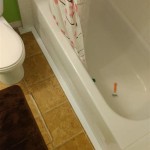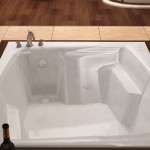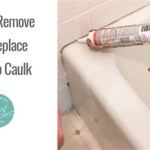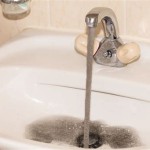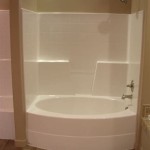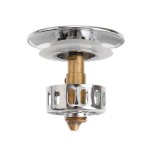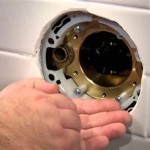Best Ways to Clean Bathtub Scum
Bathtub scum, a common household nuisance, is a persistent buildup that can make a bathtub look dirty and uninviting even after a regular cleaning. This residue is a combination of soap scum (formed from the reaction of soap with hard water minerals), body oils, dead skin cells, hair, and dirt. The longer this mixture sits, the harder it becomes to remove, potentially leading to staining and a breeding ground for bacteria and mold.
Understanding the nature of bathtub scum is crucial for effectively tackling it. Hard water, rich in minerals like calcium and magnesium, exacerbates the problem. When soap interacts with these minerals, it forms insoluble salts that precipitate out and cling to surfaces. Synthetic detergents, often found in commercial cleaning products, can also contribute to scum formation, although to a lesser extent than traditional soaps. Furthermore, the porosity of the bathtub material itself, whether it is acrylic, porcelain, or fiberglass, can influence how easily scum adheres and penetrates the surface.
Regular cleaning is the most effective way to prevent the accumulation of stubborn bathtub scum. Wiping down the bathtub after each use will remove excess water and loose debris, hindering the formation of a hardened layer. Ensuring adequate ventilation in the bathroom can also minimize moisture buildup, preventing the growth of mold and mildew that often accompany scum.
Choosing the Right Cleaning Solution
The selection of an appropriate cleaning solution is paramount for successful scum removal. Several options exist, ranging from commercially available cleaners to homemade solutions. The best choice will depend on the severity of the scum buildup, the type of bathtub material, and personal preferences regarding environmental friendliness and chemical exposure.
Commercial bathtub cleaners are readily available in various formulations, including sprays, foams, and creams. These products often contain surfactants, which lower the surface tension of water, allowing the cleaner to penetrate the scum. They may also include chelating agents that bind to hard water minerals, preventing them from reacting with soap. Some commercial cleaners also contain disinfectants to kill bacteria and mold. When using commercial cleaners, it is imperative to follow the manufacturer's instructions carefully, paying attention to recommended contact times and safety precautions. Proper ventilation is essential, and the use of gloves is recommended to protect the skin from harsh chemicals.
Homemade cleaning solutions offer a safer and often more cost-effective alternative to commercial products. Many effective homemade recipes rely on readily available ingredients such as vinegar, baking soda, and lemon juice. Vinegar, an acetic acid, is particularly effective at dissolving soap scum and mineral deposits. Baking soda, a mild abrasive, can help scrub away stubborn buildup. Lemon juice, another acidic option, possesses natural cleaning and deodorizing properties. These ingredients can be used individually or in combination to create customized cleaning solutions tailored to specific needs.
One popular homemade cleaning solution involves mixing equal parts white vinegar and water in a spray bottle. The mixture can be sprayed onto the affected areas, allowed to sit for 15-30 minutes to soften the scum, and then scrubbed with a sponge or brush. For heavier buildup, baking soda can be sprinkled onto the sprayed surface before scrubbing, adding extra abrasive power. Another effective method involves making a paste of baking soda and water and applying it directly to the scum. The paste can be left to dry for several hours or overnight before being scrubbed off. Lemon juice can be used in a similar fashion, either applied directly to the scum or mixed with baking soda to create a cleaning paste.
The type of bathtub material must be considered when selecting a cleaning solution. Abrasive cleaners and scouring pads, while effective at removing scum, can scratch or dull the finish of certain materials, particularly acrylic and fiberglass. Mild, non-abrasive cleaners are generally recommended for these surfaces. Porcelain bathtubs are more durable and can withstand more aggressive cleaning methods, but even these surfaces can be damaged by excessively harsh chemicals or abrasive tools. It is always advisable to test any cleaning solution on a small, inconspicuous area of the bathtub before applying it to the entire surface.
Effective Cleaning Techniques
Beyond the choice of cleaning solution, the cleaning technique employed also plays a crucial role in the effectiveness of scum removal. Proper application, scrubbing, and rinsing are all essential steps in achieving a clean and scum-free bathtub.
When applying the cleaning solution, ensure that all affected areas are thoroughly covered. Spray bottles are useful for distributing liquid cleaners evenly, while pastes can be applied directly to specific areas of buildup. Allowing the cleaning solution to sit for a sufficient amount of time is crucial for softening the scum and loosening its grip on the bathtub surface. The recommended contact time will vary depending on the cleaning solution and the severity of the scum, but generally, allowing the solution to sit for at least 15-30 minutes is advisable. For particularly stubborn scum, longer soaking times, even overnight, may be necessary.
Scrubbing is an integral part of the cleaning process, and the right tools can make the task much easier. Sponges, brushes, and microfiber cloths are all suitable for scrubbing bathtub scum. The type of scrubbing tool selected should be appropriate for the bathtub material. Non-abrasive sponges and microfiber cloths are ideal for delicate surfaces like acrylic and fiberglass, while brushes with firm bristles can be used on more durable surfaces like porcelain. Oscillating scrub brushes, powered by batteries or electricity, can be particularly effective at removing stubborn scum, especially in hard-to-reach areas. When scrubbing, apply moderate pressure and use circular motions to loosen the scum. Avoid excessive force, which can damage the bathtub surface.
Rinsing is the final step in the cleaning process, and it is essential to remove all traces of the cleaning solution and loosened scum. Use clean, warm water to thoroughly rinse the entire bathtub surface. Ensure that all corners and crevices are thoroughly rinsed to prevent residue buildup. After rinsing, dry the bathtub with a clean towel to prevent water spots and further scum formation. Proper drying also helps to inhibit the growth of mold and mildew.
Preventative Measures for Minimizing Scum Buildup
While effective cleaning techniques are essential for removing existing bathtub scum, preventative measures are crucial for minimizing its future buildup. Implementing strategies to reduce the factors that contribute to scum formation can significantly decrease the frequency and intensity of cleaning required.
Switching to liquid soap or shower gel can reduce scum buildup compared to traditional bar soap. Liquid soaps and shower gels typically contain synthetic detergents that are less likely to react with hard water minerals. When bar soap is preferred, using a soap dish that allows the bar to drain and dry completely between uses can help minimize scum formation. Damp bar soap is more likely to react with hard water minerals, increasing the amount of scum deposited on the bathtub surface.
Installing a water softener can significantly reduce the mineral content of the water supply, thereby decreasing the formation of soap scum. Water softeners remove calcium and magnesium ions from the water, preventing them from reacting with soap. While the initial investment in a water softener can be substantial, the long-term benefits, including reduced scum buildup and improved water quality, can outweigh the costs. Another option is to use a shower filter, which can remove some of the minerals and other contaminants from the water. Although shower filters are less effective than whole-house water softeners, they can provide a noticeable reduction in scum buildup.
Regular ventilation is crucial for preventing moisture buildup in the bathroom, which promotes the growth of mold and mildew and contributes to scum formation. After each shower or bath, open a window or turn on the exhaust fan to allow moisture to escape. Ensure that the exhaust fan is functioning effectively and that it is properly sized for the bathroom. Regularly cleaning the exhaust fan's vent can improve its airflow and efficiency. Leaving the shower door or curtain open after use can also promote air circulation and reduce moisture buildup. Additionally, consider using a dehumidifier in the bathroom to remove excess moisture from the air, particularly in areas with high humidity.

How To Clean A Bathtub The Right Way In 9 Easy Steps

This Tip Takes The Pain Out Of Cleaning Your Bathtub

How To Clean Soap Scum And Stains In A Bathtub

2 Ingredient Magic Banish Soap Scum Effortlessly
Tiktoker Shares For Cleaning Soap Scum From Your Bathtub It S So Easy And Works Every Time

How To Clean A Bathtub Pro Housekeepers

How To Remove Soap Scum In Your Bath And Washer Wet Forget Blog

The Right Way To Clean And Scrub Your Bathtub Denver House Cleaning Services Cleaners Dashing Maids

How To Make Ugly Soap Scum Disappear Everyday Skate

How To Remove Soap Scum The Best Removers
Related Posts

